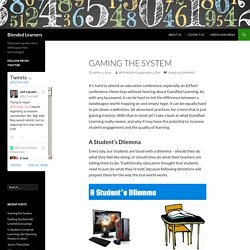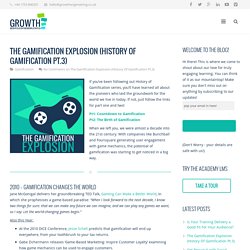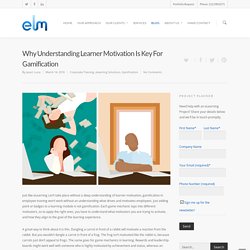Zoom
Trash

The Benefits of Gamification for Learning Reinforcement. Gamification is rapidly gaining traction in the learning industry as an effective way to increase knowledge retention and drive behavior change.

This new, innovative approach to training and learning reinforcement offers benefits for a wide-range of soft-skill and technical training reinforcement programs. If you are looking to increase the impact of your training programs and effectively drive behavior change, consider testing gamification based on the benefits outlined below. 1.
Increases the Impact of Training & Reinforces Learning to Maximize Impact When it comes to traditional instructor-led training sessions and workshops, it can be difficult for participants to translate content for on-the-job application. Gamification reinforces traditional training programs and eLearning courses by giving participants the opportunity to apply principles to real-life challenges and scenarios through a safe learning experience. 2. 3. 47 Gamification elements, mechanics and ideas. Gaming the System. It’s hard to attend an education conference, especially an EdTech conference, these days without hearing about Gamified Learning.

As with any buzzword, it can be hard to tell the difference between a bandwagon worth hopping on and empty hype. It can be equally hard to pin down a definition, let alone best practices, for a term that is just gaining traction. With that in mind, let’s take a look at what Gamified Learning really means, and why it may have the potential to increase student engagement and the quality of learning. A Student’s Dilemma Every day, our students are faced with a dilemma – should they do what they feel like doing, or should they do what their teachers are telling them to do.
Developments in the way we think about student learning have challenged these assumptions in several ways. Principles of Gaming Gamified Learning pioneers have identified a number of elements that educators can borrow from game designers in creating GL environments. Games Vs. Game On? Gamification: how it can engage and motivate your employees. The Gamification Explosion (History Of Gamification Pt.3)
If you’ve been following out History of Gamification series, you’ll have learned all about the pioneers who laid the groundwork for the world we live in today.

If not, just follow the links for part one and two! Pt1: Countdown to Gamification Pt2: The Birth of Gamification When we left you, we were almost a decade into the 21st century. With companies like Bunchball and Foursquare generating user engagement with game mechanics, the potential of gamification was starting to get noticed in a big way. 2010 – Gamification changes the world. Using Gamification to Drive Innovation in a Global Company. Why Understanding Learner Motivation Is Key For Gamification - eLearning Mind. Just like eLearning can’t take place without a deep understanding of learner motivation, gamification in employee training won’t work without an understanding what drives and motivates employees.

Just adding point or badges to a learning module is not gamification. Each game mechanic taps into different motivators, so to apply the right ones, you have to understand what motivators you are trying to activate, and how they align to the goal of the learning experience. Gamification: not a gimmick but a radical new way of teaching. Despite the hype surrounding gamification the concept itself is poorly understood.

I believe the real potential for the use of gamification in education, particularly schooling, is being missed. For those who are new to the term ‘gamification’, it is used to describe a range of processes where the mechanics, or features, of games are integrated into traditionally non-game tasks, such as awarding badges for successfully completing tasks. Education isn’t the only field attempting to use gamification. Marketing, health and fitness, human resources, and a range of other spheres, have embraced the use of gamified elements.
These elements include things like points, badges, levels and leaderboards (which show a player’s progress or score compared to other players), These are all being used with varying degrees of success. At present I believe gamification focuses too much on the use of such game elements without an understanding of how and why these mechanisms are used in gaming. ZTEP - Zombie Technology Elimination Project; Spoonful of Zombies. Spoonful of Zombies With a team of about 10 people, I am leading an internal engagement enhancement project to make the conversion of old technologies to new technologies more fun and more likely!

As suggested by my friend Rebecca who is also one of the likely players, we're using Zombies! I drafted up the Gamified experience complete with a narrative / story that frames the player experience. Since that time, valuable feedback has been received and the concept refined. The story is: “Zombie Technologies (ZT) are plotting to take our community over. Our specific target behaviors are for the players to: Replace an old technology code item with new approved technologySupport a player via news feed. Progression Loops A player can progress through different levels of zombie technology engagement. Zombie Hunter Newbie - 0Zombie Hunter Apprentice - 100Zombie Hunter Journeyman - 500Zombie Hunter Master - 2000Zombie Hunter Hero Level I - 10000Zombie Hunter Hero Level II - 20000.